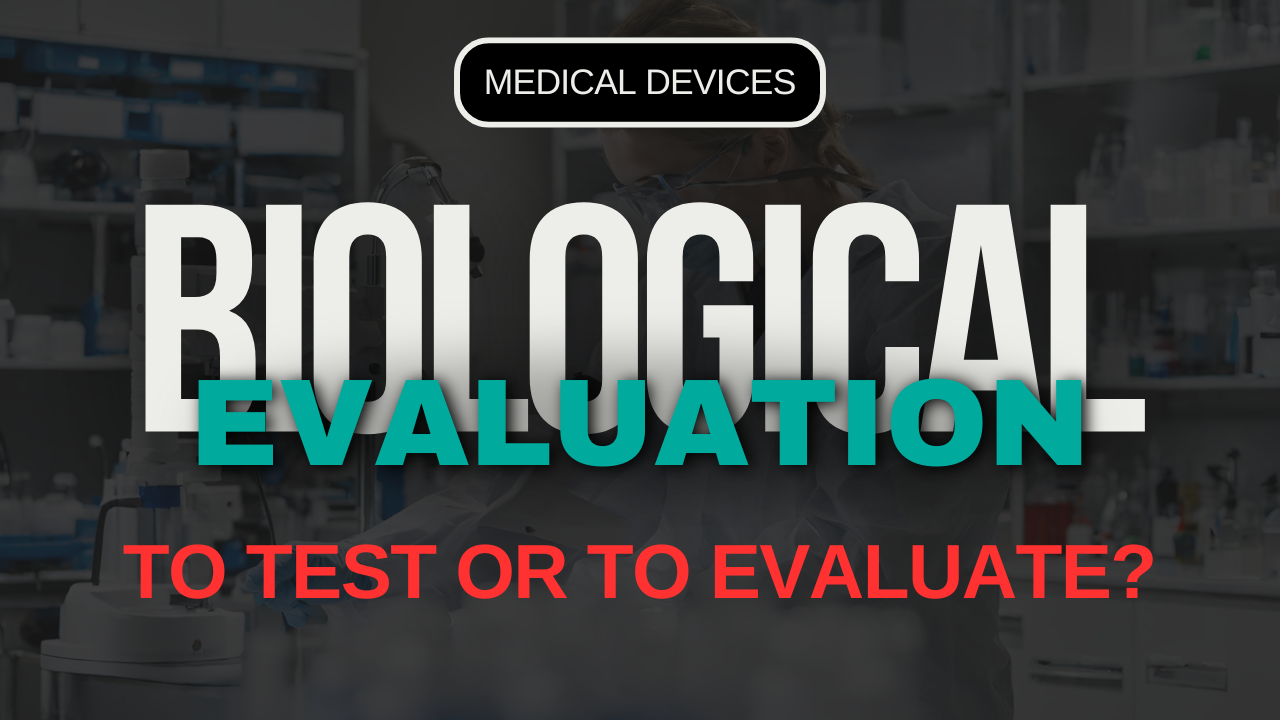Biological Evaluation: You might not need tests!
Biological Evaluation: You might not need tests!
A common misconception among manufacturers is to understand biocompatibility compliance as the need for extensive laboratory testing. However, under the MDR and according to ISO 10993-series, the focus is on evaluation — a concept that encompasses much more than just testing.
Understanding Biocompatibility
Biocompatibility is about ensuring that a medical device is safe for its intended use, without causing any unacceptable risks of adverse reactions. Under the MDR, demonstrating a device's biocompatibility is critical to show safety of the device. The ISO 10993-series provides the framework for evaluating the potential biological risks of medical devices, guiding manufacturers through the necessary steps to achieve compliance.
The Misconception of Biocompatibility Testing
We regularly see manufacturers mistakenly believe that biocompatibility is solely about conducting a series of laboratory tests. This misunderstanding can lead to unnecessary expenses and delays in product development - and still result in findings during the audit. Testing is indeed as component of the evaluation process, but it is not the entirety of it.
Common findings
- Many lab tests presented in TD, but no report from the manufacturer is available
- The reviewer expects a biological evaluation report that represents the evaluation of the legal manufacturer itself.
- Report and lab tests available, but no planning
- The assessor does not know the approach taken by the manufacturer and how the endpoints were identified and addressed.
- Missing steps in the evaluation process
- e.g. manufacturing process steps that could have an impact on biocompatibility
The Essence of Biocompatibility Evaluation
The crux of biocompatibility under MDR is the evaluation process - a process that needs to be performed and finalized before any lab protocol is written. Evaluation involves a detailed examination of the device, including its materials and the materials properties. It requires manufacturers to critically assess the ingredients of the product, considering how they interact with the body. All those information might be given in the technical documentation already, but its vital to include them in the biocompatibility evaluation because they not only need to be documented but also evaluated. You can prove - by Material Safety Data Sheet or general chemical information - that the materials are safe to use? Than you already saved yourself a lot of money and time put into testing.
Best Practices for Biocompatibility Evaluation
Luckily the ISO 10993-series provides us with very detailed descriptions of the recommended process. Make sure to explicitly address the step-by-step systematic approach to a biological evaluation given as a figure in ISO 10993-1 and discuss (not test!) each endpoint provided in table A.1 of 10993-1. Keep in mind that it might be a requirement to evaluate the endpoint but this not means you are required to test it. But also consider, that any evaluation needs to be written down or it won’t be traceable for the auditor.
Let´s get in touch
Last but not least, complex processes such as biocompatibility are best understood in dialogue with other people from the industry - if you are still unclear about anything to do with biocompatibility or how to automate the documents behind it, please do not hesitate to get in touch with us!

The fastest and easiest way to digitalize your
RA & QA

%20(1280%20%C3%97%20720%20px)-3.png)



